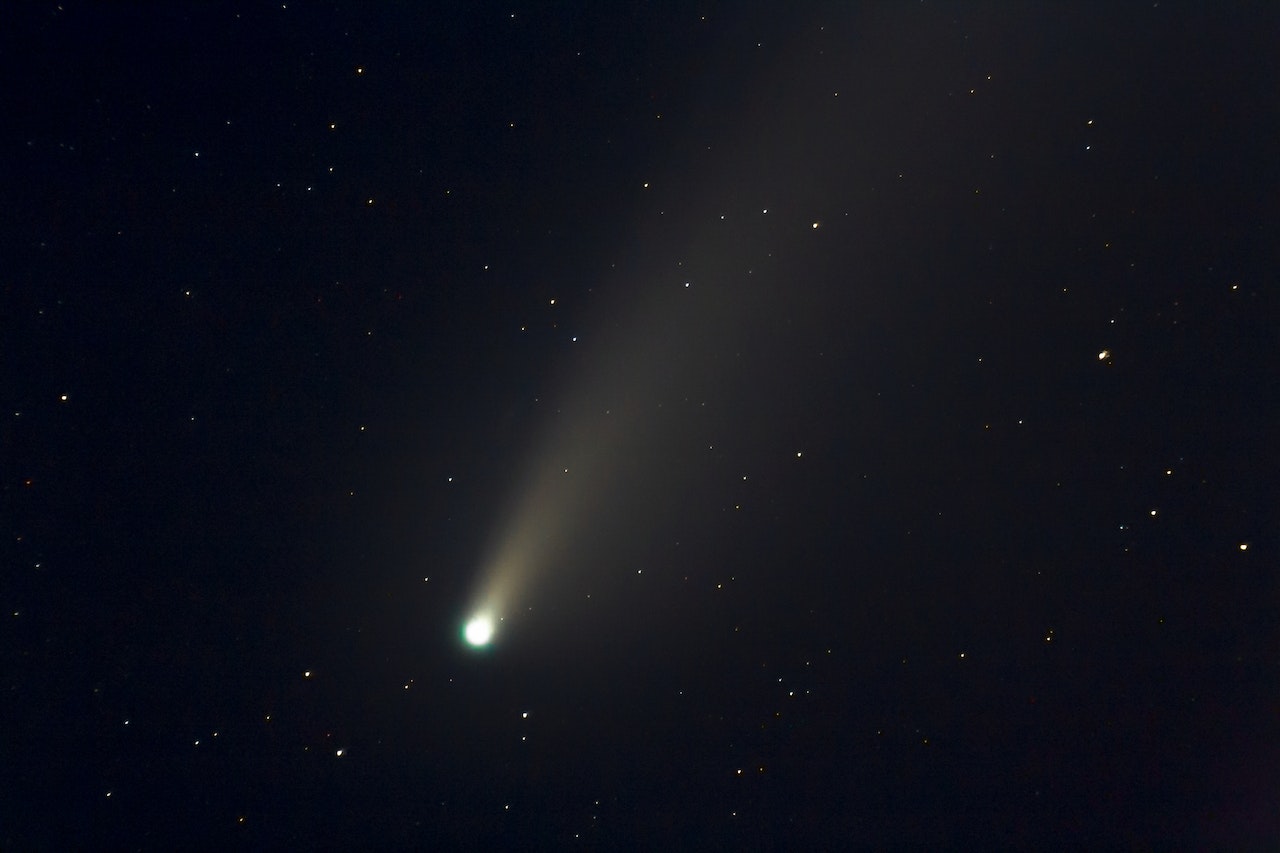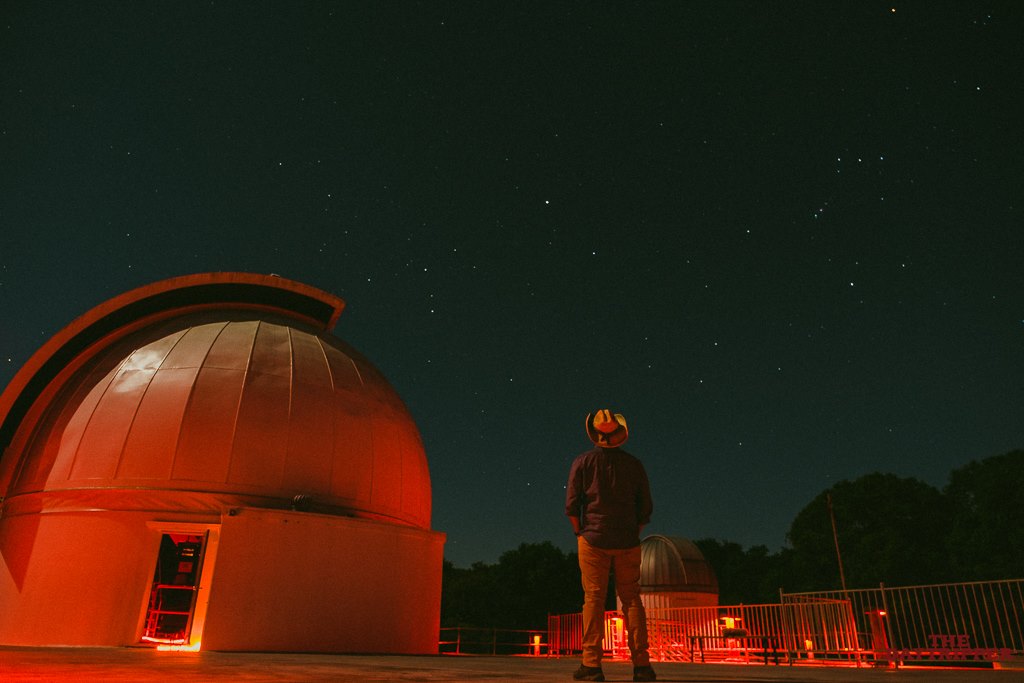As January ends and February begins, a comet enters the northern evening sky, and it may become bright enough to see with the unaided eye! The comet is C/2022 E3 ZTF. ZTF is the discoverer, the Zwicky Transient Facility, an astronomical survey of the sky using a camera attached to a telescope at Palomar Observatory in California. The ‘C’ means that this a long period comet which hasn’t been near Earth in about 50,000 years. Interaction with other planets on the way in has changed the orbit of Comet ZTF; it won’t be back in the inner solar system for many millions of years (if ever). ‘2022 E3’ indicates that it was the third comet discovered in the first half of March, 2022.

Comets are made of ice and dust and are often called ‘dirty snowballs’. They are believed to be left over from the formation of the solar system. As comets approach the sun, ice changes into gas and the dust embedded within the ice is released. A cloud of particles expands out to form a coma around the comet’s solid nucleus. This coma may be a hundred thousand miles across. Radiation pressure of sunlight and the powerful solar wind sweep gases and dust away from the comet’s head into a tail spreading millions of miles behind the comet and pointed away from the Sun. Comets have bluish gas tails and yellowish dust tails. Among the gases released from Comet ZTF is diatomic carbon (C2). This gas lends a greenish hue to the head of the comet.
Comet ZTF passed closest to the Sun on January 12, 2023. However, from our perspective the comet approached from the other side of the Sun. Thus, Comet ZTF now approaches the Earth as it recedes from the Sun. Closest approach to Earth is on February 1, 2023, and that’s when it should appear brightest to us. But will it be bright enough to see with the unaided eye? The best projections indicate a brightest magnitude of about 5.5, which makes it visible to the unaided eye but easily washed out by other light sources. Even in the best case scenario, you will need a fully dark sky far from any city lights and a night with no moon to see ZTF with the unaided eye. Binoculars will offer a better view.
This is because comets are fuzzy spots, not single points of light. The quoted brightness for a comet is often the total brightness of the whole fuzzy blob; each part of that blob is dimmer. Unfortunately, just as the comet enters the evening sky and approaches peak brightness, the Moon passes First Quarter on 1/28 and approaches full on February 5. Thus, the comet may be hard to see with your naked eye even if it is technically bright enough. When ZTF is at its brightest (February 1-2), you might see it better if you get up early in the morning, after the Moon has set.

Comet ZTF’s path in space brings it high over Earth’s North Pole. Therefore, as the comet enters the evening sky look for it about due north, under the North Star. As night falls, find two stars below the North Star and about as bright. ZTF will be just to the lower right of these stars on January 26 and to the right of one of them (Kochab) on the 27th. On January 29, ZTF appears on a line between the ‘pointer’ stars in the Big Dipper’s bowl and the North Star. ZTF appears higher and higher in the northern sky each night. On February 5, it appears right next to Capella, the 6th brightest star ever seen at night. The comet then appears almost overhead at dusk for a few nights. By February 10, ZTF is high in the south at dusk near Mars. By then, though, the comet is receding from both Earth and Sun, and therefore fading each night.
Here is a map from theskylive.com that shows comet ZTF’s position from any location at any time you choose.
Astronomers have discovered around 4500 comets, with maybe a trillion lurking in the Oort cloud, not yet detected. However, it is rare that a comet approaches Earth closely enough to be seen with the unaided eye. Let’s hope, then that ZTF puts on a good show.
For more on January 2023 Sky Happenings, click here.







